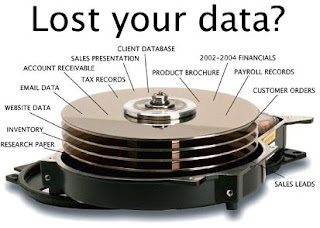No self-respecting computer user will buy a PC already configured often already obsolete components. But we have to admit: having a configuration can transform me into an adventure in the jungle IT. However, the choice of motherboard is one of the starting points.
Most buyers are turning to computers preconfigured systems, taking into account those basic specs that give an overall PC performance. But if you want to put together a customized system with carefully chosen components, an important step is choosing the motherboard. Because this will condition subsequent configuration of the entire system. Although at first glance it seems a complicated operation that requires a lot of technical knowledge, but do not lose your temper, i will help you to understand.
FORMATS
Overcoming criterion called producer, initially you should inquire format motherboard. But in the meantime this has been stabilized. Since its introduction in 1995 by Intel ATX format, surely now most home computers have preferred this option to determine not only the form of housing, but also the management of electricity. So most likely, you will opt for the classic ATX motherboard. But overall your culture, you should know that there are smaller versions MicroATX or Mini-ITX. They are consuming less power and therefore do not need to manage heat. A newer generation are BTX formats. Developed in 2004, emerged as a result of consuming power of new technologies, thereby generating increasingly more heat.
PLATFORM, PROCESSOR, SOCKET
Once past the gauntlet required size, we need to talk about the platform. Even here things are very complicated. How poor are likely to opt for the American Apple, you only have two options: Intel or AMD. It means if Intel recently as the steep prices compared to AMD, now, the two largest manufacturers of chips can be difficult to shoot a strictly by these two criteria. What came first: the chicken or the egg? a similar dilemma we are and we reach this point: pick first processor to know what the hardware platform we have to focus further or to choose first and then board a compatible processor? Most would vote for the first option, but there are arguments for the second. Anyway, it's better to target those boards that support a larger range of processors, in view of a possible upgrade. CPU choice is made depending on what you intend to do with your computer just setting. And here you have in mind especially the CPU speed. Only then will you turn to a corresponding socket. But this is already another story ...
CHIPSET
Perhaps the most delicate point of our discussion is the so-called chipset, considered the heart of the motherboard. It coordinates the entire system through two distinct parts: the Northbridge and Southbridge. The first is related to the processor data bus and RAM modules, while the second will connect the other components (hard drive, optical drives CD / DVD, video and sound cards, any components connected via PCI slots and other components connected via USB, serial, PS / 2). The two are separated physically, but communicate over a high-speed bus.
Opting for a chipset manufacturer or another is done as needed (performance is not justified if excessive use resource intensive applications) and the maker of processors for which you chose. Thus, AMD will have to choose a product NVidia chipset, VIA, SIS, AMD or ALI, and for the Intel chipsets Intel, SIS, or VIA AU.
Chipsets are implemented software for a specific set of drivers. Do not forget to keep the CD with every motherboard and reinstall the system to immediately install these drivers. Also on the CD in question will receive several programs, among which the most important is the CPU heat Monitoring of rotational speed of the cooler.
ADDITIONAL FEATURES
Also, the chipset is also responsible for other features like sound card, video or network card, in which case you are exempt from additional expenses to be purchased separately. However, most of the new generation motherboards (especially the low end) offer this feature. It's good to know that integrated motherboards, especially graphics will feast greedy of system RAM. Besides more RAM you will need to have, never will warn that there will be some integrated cards performance. So if you want to play some newer games, opt for an independent video card, more performance than integrated motherboard.
As many technologies implemented on new generations of motherboards, we can talk more. Whether it is the cooling or power consumption reduction, not to mention the chipset, the fact is that manufacturers are constantly moving.
MARKET SEGMENT
And if all this continues to be exposed to sound like gibberish, we invite you to apply simple rule of three. That is to consider the three market segments: Low end, Mainstream and High end.
Low end is where the emphasis is on price. Course, and facilities will be minimal. However, you get a computer that can handle it acceptable to all household needs. If new games, however, you may experience problems.
Mainstream is the next step to try to keep an acceptable ratio quality / price. This segment addresses the future visionaries who want to find them ready.
The last step definitely not interested. includes components not accept any compromise in terms of quality and prices are as.
This applies to all electronic devices tiebreaker, but if the choice motherboards simplify considerably. A home user to IT-istic common interests will be most of the time, excited by a low end card that adds possibly a graphics card to be able to also enjoy the latest games.
In what follows, we will build on places or banks (connectors, slots) available on a motherboard. Settlement, their number and type vary depending on motherboard model, but basically, you will not face other connectors.


















